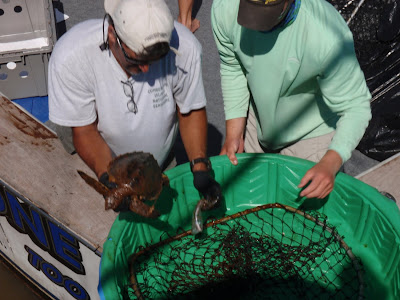
For the first two weeks of my four-week detail working on the Gulf oil leak, I lived on a barge in the Mississippi River Delta. The barge was located in Dennis Pass, a small cut through the delta emptying into the Gulf of Mexico, about 14 miles south of Venice, Louisiana (i.e. where the blacktop ends). As part of a team of local and national biologists, I spent most days on a small boat conducting wildlife rescue missions. Our primary duty was to survey remote beaches and marshes to locate oiled wildlife and transport them to rehabilitation centers.

On one memorable trip, we traveled 26 miles offshore via sport-fishing boat to rescue young Kemp’s Ridley sea turtles, a federally-endangered species. At times, the sea grass and oil would come together to form miles-long, thick windrow-like slicks. As the turtles swam in the waters of the Gulf, they would become entrapped in the mats of thick crude oil floating on the surface.

We netted five turtles from the oil that day, cleaned them off, and transferred them to a National Oceanic and Atmospheric Administration boat for transport to a rehabilitation center for more extensive care and cleaning. By the time I left the Gulf a few weeks later, hundreds of federally endangered sea turtles had been saved from the oil-slicked waters. I believe that that day and the rest of my time spent in the Gulf was time well spent! -- Michael


No comments:
Post a Comment